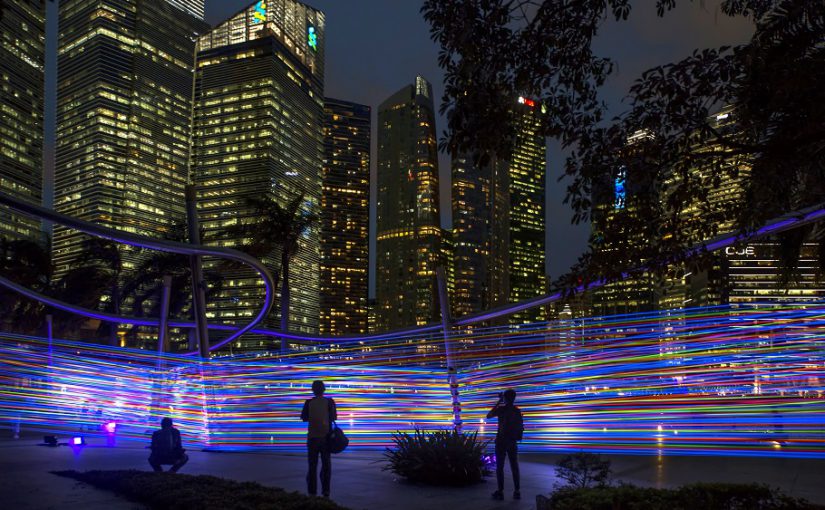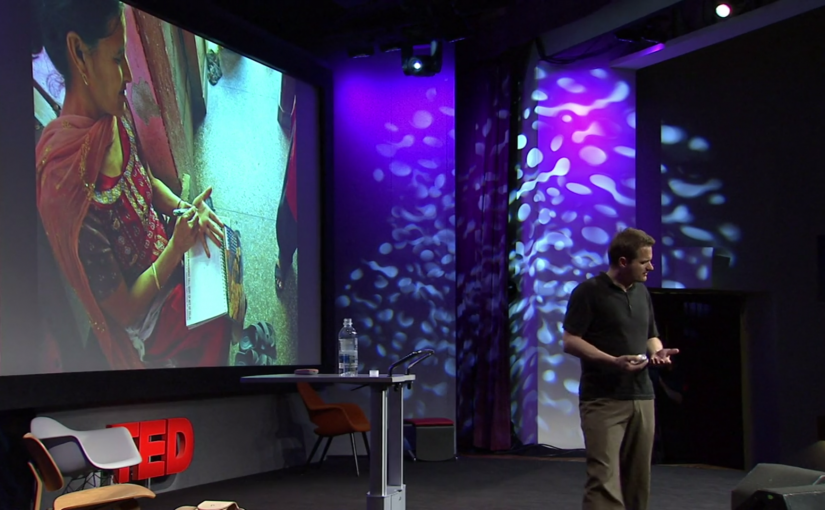- Sustainability is the prolonging of available tangible and intangible resources, for the generations to come. For instance, tangible resources can be things like fauna and flora… and intangible resources can be things like culture and economy. If we talk about sustainability and iLight, it immediately makes sense to think of energy saving.
- Horizontal Interference by Katarzyna Malejka and Joachim Slugocki
This project caught my attention because it shows a certain level of sophistication in terms of light play. The artists used the reflective property of the material to indirectly show the effects of light. There’s an interesting symbiosis between the complex repetition of the colourful cords and the simple use/projection of light. In addition to that the ‘weightlessness’ attribute of the cords, makes the installation ‘dance’ because of the natural presence of the wind. I believe this installation is an effective design because of the honest interaction between nature and object; nature and men.
Featured Image Source: https://www.ilightmarinabay.sg/Discover/Installations/Horizontal%20Interference


